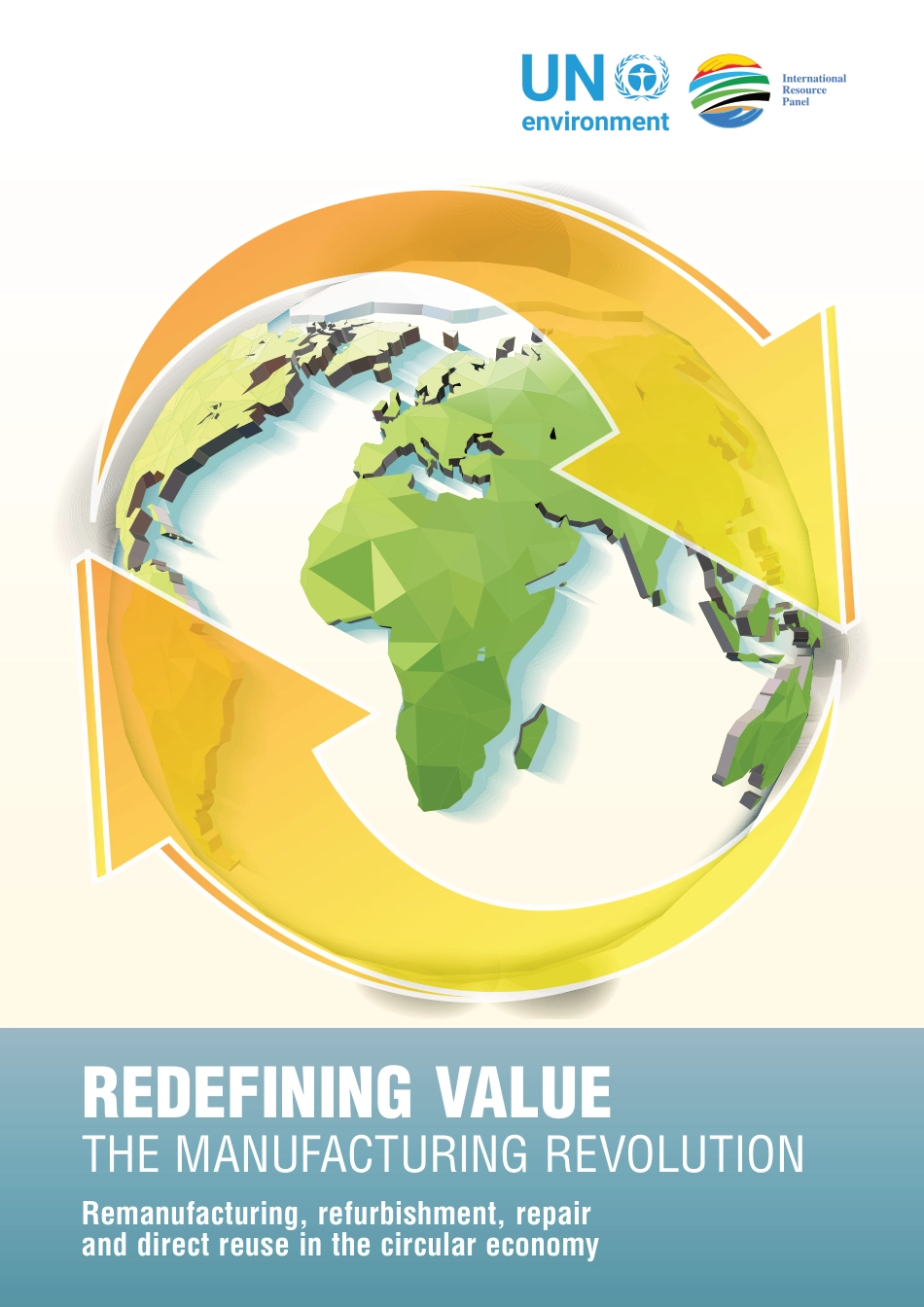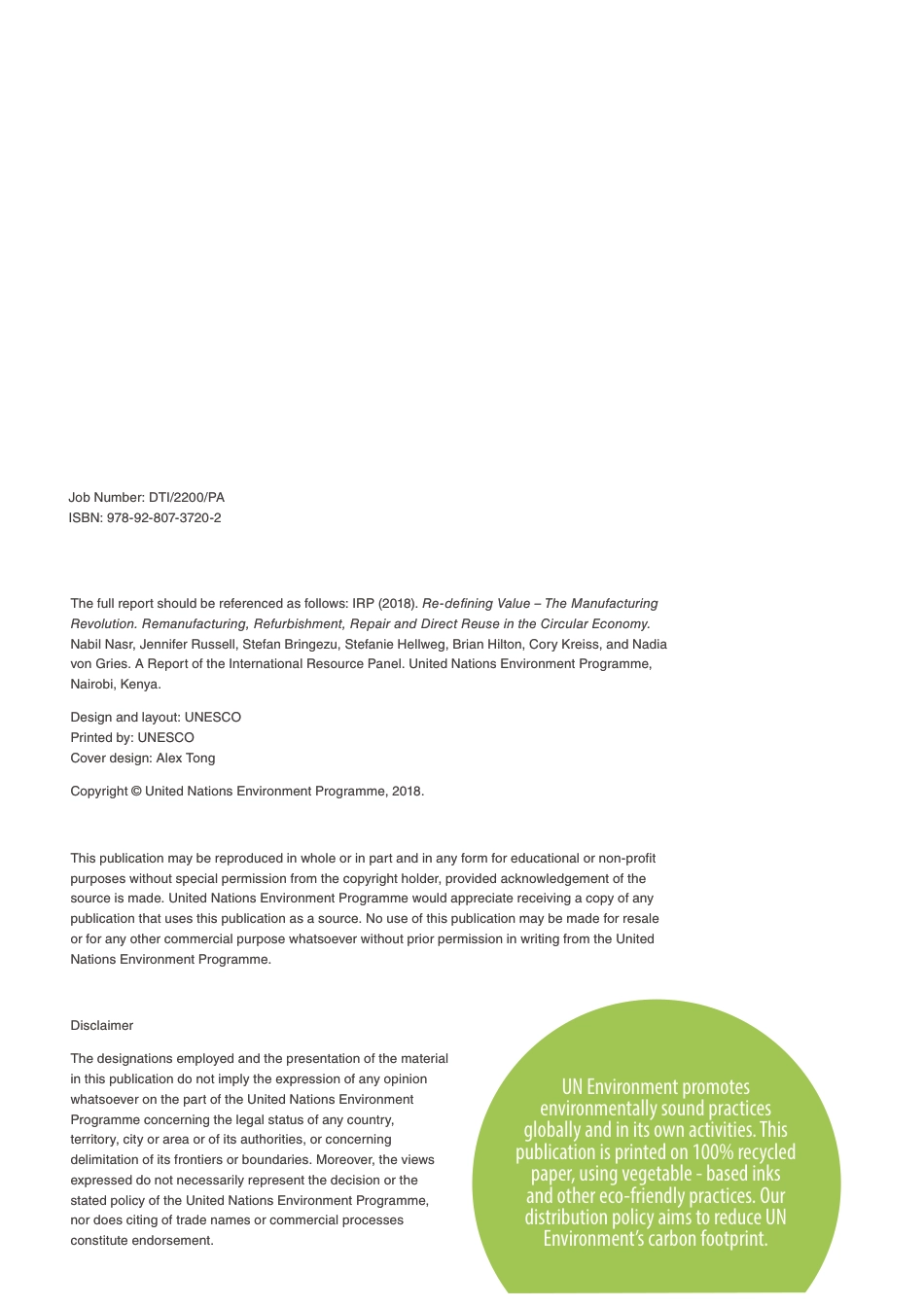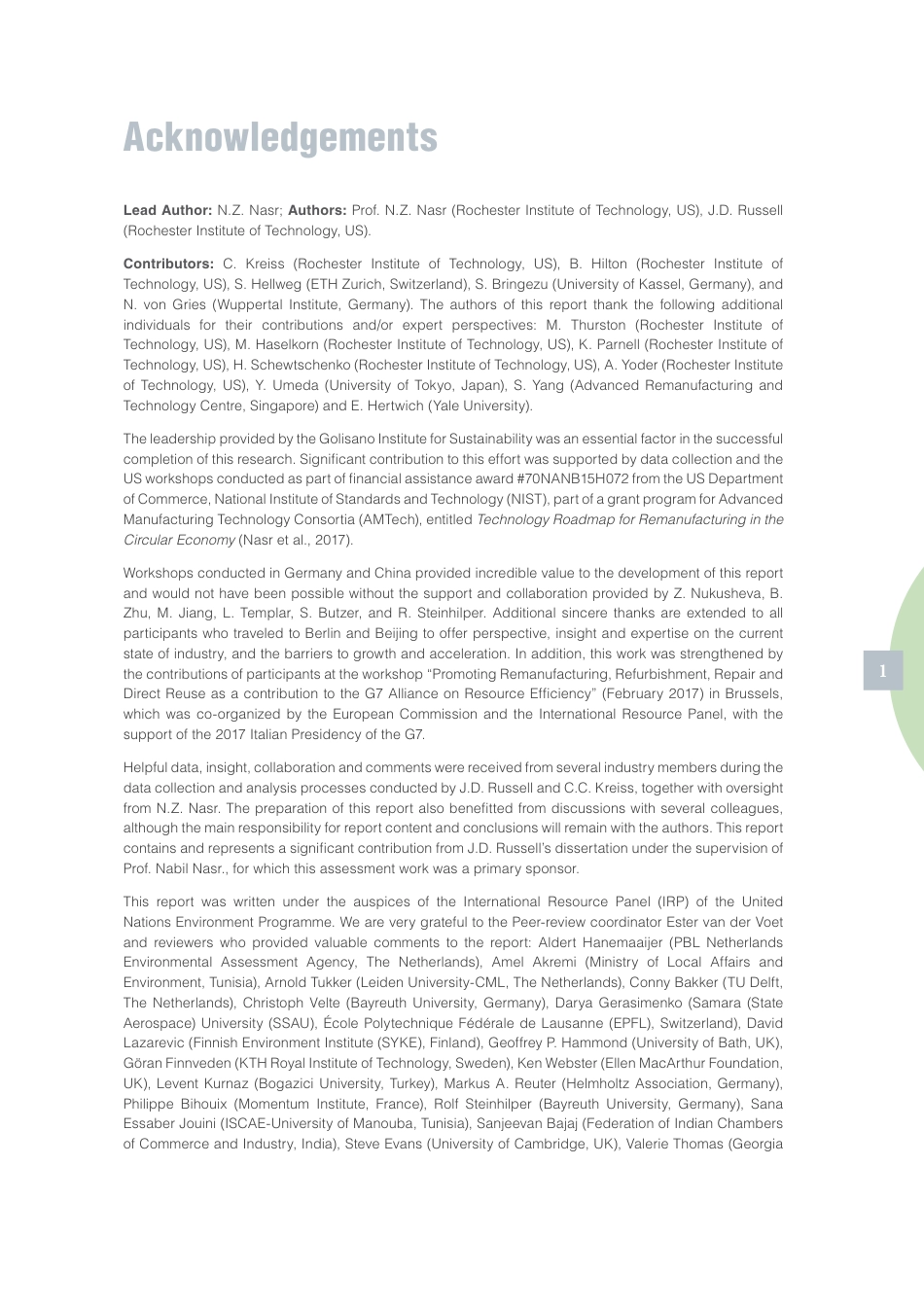REDEFINING VALUE THE MANUFACTURING REVOLUTION Remanufacturing, refurbishment, repair and direct reuse in the circular economyUN Environment promotes environmentally sound practices globally and in its own activities. This publication is printed on 100% recycled paper, using vegetable - based inks and other eco-friendly practices. Our distribution policy aims to reduce UN Environment’s carbon footprint.The full report should be referenced as follows: IRP (2018). Re-defining Value – The Manufacturing Revolution. Remanufacturing, Refurbishment, Repair and Direct Reuse in the Circular Economy. Nabil Nasr, Jennifer Russell, Stefan Bringezu, Stefanie Hellweg, Brian Hilton, Cory Kreiss, and Nadia von Gries. A Report of the International Resource Panel. United Nations Environment Programme, Nairobi, Kenya.Design and layout: UNESCOPrinted by: UNESCOCover design: Alex TongCopyright © United Nations Environment Programme, 2018. This publication may be reproduced in whole or in part and in any form for educational or non-profit purposes without special permission from the copyright holder, provided acknowledgement of the source is made. United Nations Environment Programme would appreciate receiving a copy of any publication that uses this publication as a source. No use of this publication may be made for resale or for any other commercial purpose whatsoever without prior permission in writing from the United Nations Environment Programme.DisclaimerThe designations employed and the presentation of the material in this publication do not imply the expression of any opinion whatsoever on the part of the United Nations Environment Programme concerning the legal status of any country, territory, city or area or of its authorities, or...



